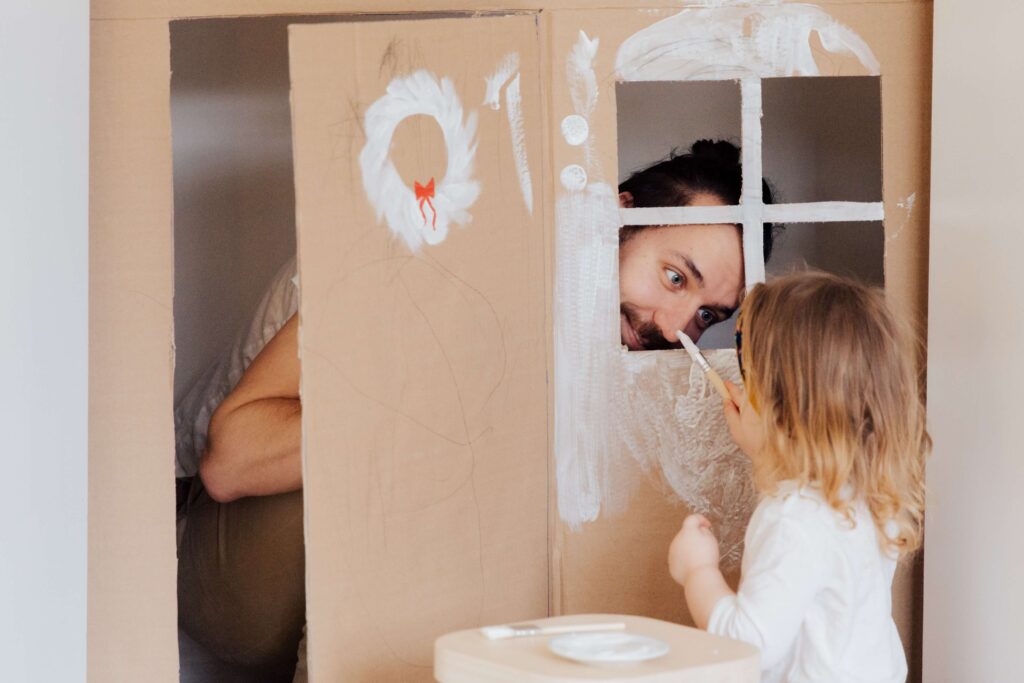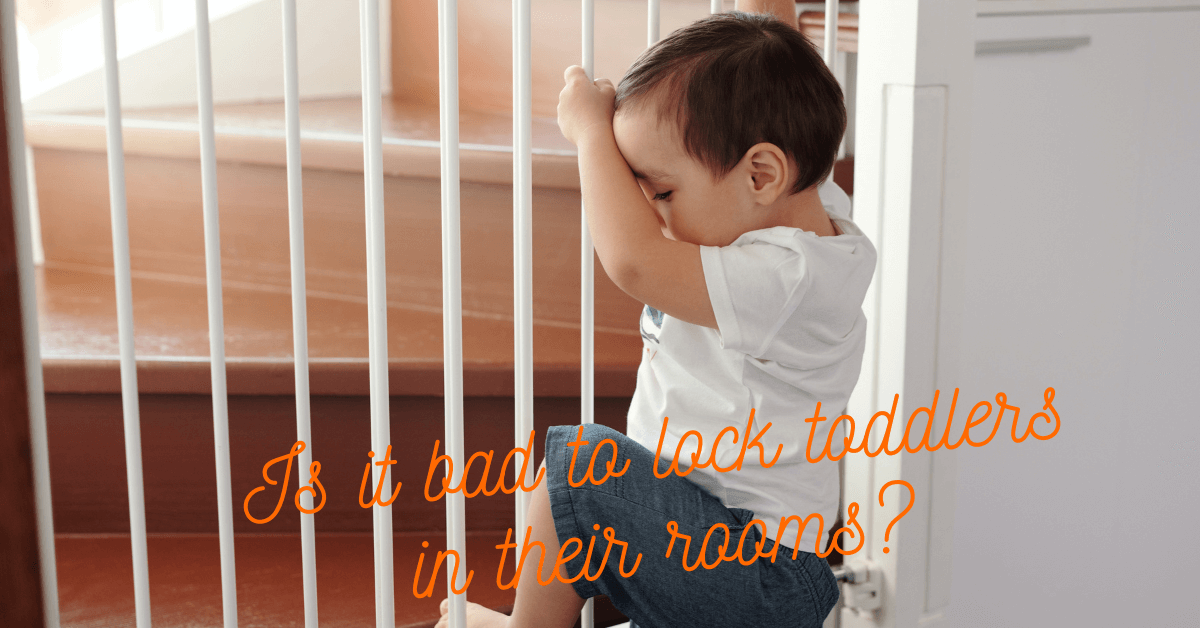To lock toddlers in their rooms is generally considered to be abusive and harmful. Locking toddlers in their rooms can have serious physical, emotional, and psychological consequences.
So confining a child into his room can cause fear anxiety and can also the feeling of abandonment.
The children have to face a lot of developmental delays within their babies due to the above symptoms.
Dear parents, if you are trying to seek assistance from a trusted friend, carer, family member, or professional for child development, think twice about the above-discussed aspects.
This harmful practice can have serious physical and psychological consequences for the child’s development and well-being.
The children need to explore their world. By exploring the surrounding world they can have a lot of sensory stimuli. Confining a child into their room for extended periods of time can cause negative feedback.
So, dear parents, it is important to find alternative positive methods for discipline and guidance for your kid. In that way, you can promote child safety and well-being.
Table of Contents
What do experts say about the effects to lock toddlers in their rooms?
In these situations, the parents lock their toddlers in their bedroom so that they can go to sleep and the toddlers can’t walk around the house.
Sometimes you succeed in getting your baby to fall asleep. But in other ways, there is a major concern about safety.
When we are trying to measure the overall efficacy of this particular activity, we have to come across negative points.
In case of a dangerous situation in the home, the child may not be able to get out of the home. This may be a fire or any other dangerous situation.
Being locked and trapped in a room can be affected negatively towards the child’s behavior and well-being.
If the parents lock then trapping the baby in a room can be disturbing for a young child in many ways. It can intensify children’s feelings.
If they get started to scream inside the room, that behavior can stress the hormones in children. It results in various types of behavioral changes within your child.
Children need positive interactions with caretakers and others to form secure attachments and a positive sense of self-esteem, and being locked in a room can interfere with these crucial developmental processes.
Moreover, using physical restriction as a means of discipline or control is not an effective or appropriate approach to managing challenging behaviors in young children.
There are better, more positive, and developmentally appropriate ways to address challenging behaviors and support children in learning and growing.
In conclusion, it is not recommended to lock toddlers in their rooms and it is important to provide children with a safe and supportive environment that promotes their healthy development.

What are the safer door locks?
Looking at your child in their room is risky and it has a mental effect on their development and health. So we would like to mention here that there are better options than locking the children inside their rooms.
Dutch doors to lock toddlers in their rooms
Dear parents, these are very unique. These are divided horizontally into two parts so you can open and close those two parts independently.
So this type of manufacturing method allows you great flexibility in controlling ventilation and access. So why can’t you use this manufacturing technology to keep your child inside a room?
Sometimes this dosa is referred to as stable doors. Dosa is commonly used in horse stables to allow for feeding and grooming.
So try to use this concept to lock up your children without giving them a psychological hazard then you can feed and groom them inside that room with close supervision.
Can that be used for children?
Yes, it is a good idea. That those can be used for children. If you need more supervision and control of access you can use these dutch doors.
Parents can supervise their child while still providing a barrier to prevent the child from wandering off.
Also, dutch doors are a good concept for clear room design. They are the children playing to allow parents to monitor their activities.
So makes you are to install the dope properly to prevent accidents and ensure the child’s safety.
Those are great options for the children. Within those doors, they have a top part that can open and close independently of the bottom part.
Show the parents can close the bottom part of the door and leave the top part open.
Then your child doesn’t feel trapped or isolated within a room. We suggest that this option is a very good option for your children to keep them in one place without locking their room.
Here we can use this option for your children who are likely to be locked in a room. But after half of the door can be opened so this gives them freedom.
Meanwhile, the parents can give them more attention and pay and can easily open the bottom part of the door as soon as the child is getting sleep.
What are the effects of locking toddlers in their rooms?
if you need to ensure the safety of your kid, so locking them in a room can be effective.
For example, if there are hazardous materials or equipment in a room that could harm a child, locking the door can prevent access to the room and protect the child from harm.
This concept of a child locking in a room can be used as a sleep training method. If a child is having trouble sleeping and needs to be taught to sleep independently, locking the door can be an effective method of sleep training.
However, this should only be done under the guidance of a pediatrician or sleep specialist, and for short periods of time.
Sometimes you can think of locking your kid inside a room can be considered as a behavioral technique.
In some cases, locking a child in their room for a short time can be used as a form of discipline for misbehavior. However, this should only be done sparingly and with caution, as it can be emotionally traumatic for the child and may not be an effective long-term solution.
It is important to note that child locking in a room should only be done in specific circumstances and should never be used as a long-term solution.
In most cases, there are better alternatives available to address the underlying issues that may be leading to the need for a child to lock a room.
It is important to seek guidance from a professional or expert in child development and parenting to determine the best course of action.
Reasons for children to get out of bed?
Children may experience fears or anxieties that prevent them from sleeping through the night.
This could be fear of the dark, fear of monsters, fear of being alone, or fear of something they saw or heard earlier in the day.
Some children may get out of bed at night because they need comfort or reassurance from a parent or caregiver.
This could be because they are feeling anxious, have had a nightmare, or are feeling unwell.
Children may need to get out of bed at night to use the bathroom. This is particularly common for younger children who are still learning to control their bladder.
If a child is uncomfortable, they may get out of bed to adjust their clothing or bedding or to find a more comfortable position.
Some children may have sleep disorders such as sleep apnea, restless leg syndrome, or night terrors, which can cause them to get out of bed at night.
It’s important for parents to understand the reasons why their child is getting out of bed at night so that they can address any underlying issues and help their child get the sleep they need.
This may involve establishing a consistent bedtime routine, creating a calming sleep environment, addressing any fears or anxieties, and seeking medical advice if necessary.

Shall we discuss a few methods of keeping toddlers in their rooms?
If you are trying to encourage your toddler to stay in their room for a certain amount of time, you need to follow the strategies that can help as follows.
- Create a positive sleep environment: Make sure your toddler’s room is comfortable, calm, and inviting. Use soft lighting, cozy blankets, and soothing music to help them feel relaxed and ready for sleep.
- Establish a routine: Create a consistent bedtime routine that your toddler can follow each night. This can include things like reading a story, singing a song, or giving them a warm bath.
- Set boundaries: Explain to your toddler that it’s important to stay in their room during bedtime, and set clear boundaries around what is and isn’t allowed. For example, you can let them know that they can’t leave their room until it’s time to wake up in the morning.
- Use positive reinforcement: Praise your toddler when they stay in their room for the desired amount of time.
- You can also offer small rewards, like stickers or a special toy, to encourage them to stay in their room.
- Be patient and consistent: Remember that it may take some time for your toddler to get used to staying in their room, especially if they are used to sleeping with you or wandering around the house at night.
- Be patient, consistent, and supportive as you help them learn this new habit.
Conclusion
Lock your toddler in a room is a common concern as an abusive or harmful attempt. But in some instances, Parents need to keep their children in their rooms, for their security and protection.
If you need to do this practice, parents need to think about the psychological consequences for their children a lot.
Sometimes parents can use various door lock systems to keep their children inside a room.
In other way, parents can create a positive sleep environment by establishing a routine.
Mostly the parents need to keep their children in the room during their sleep time.
So try to flow various tactics to make a productive sleep time for the kids.


Admin, this was really lovely. I appreciate your thoughtful comments.
I do trust all the ideas youve presented in your post They are really convincing and will definitely work Nonetheless the posts are too short for newbies May just you please lengthen them a bit from next time Thank you for the post
Thank you for the good writeup It in fact was a amusement account it Look advanced to far added agreeable from you However how could we communicate
hi
comment here.I highly appretiate your good thoughts’
regards